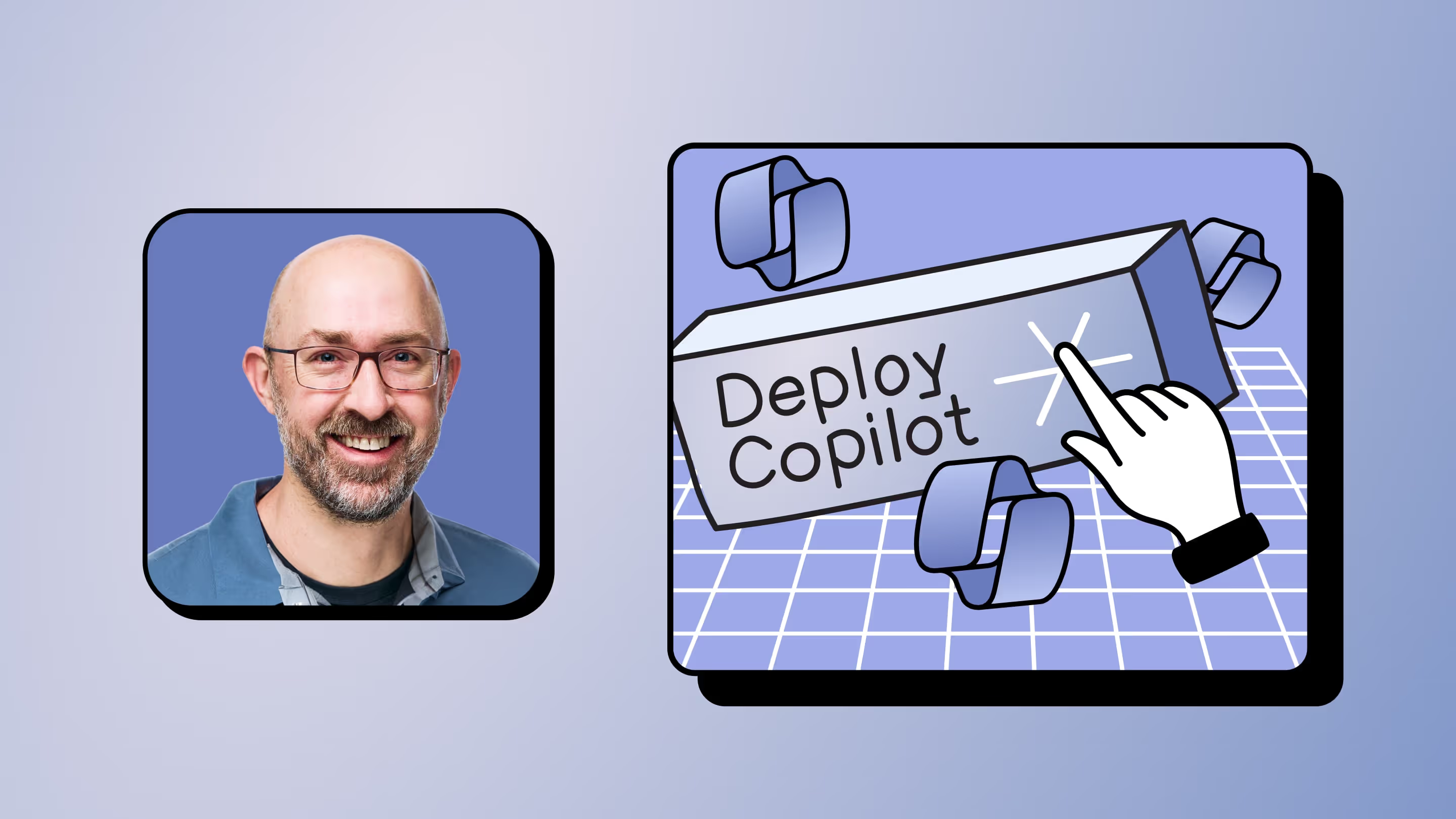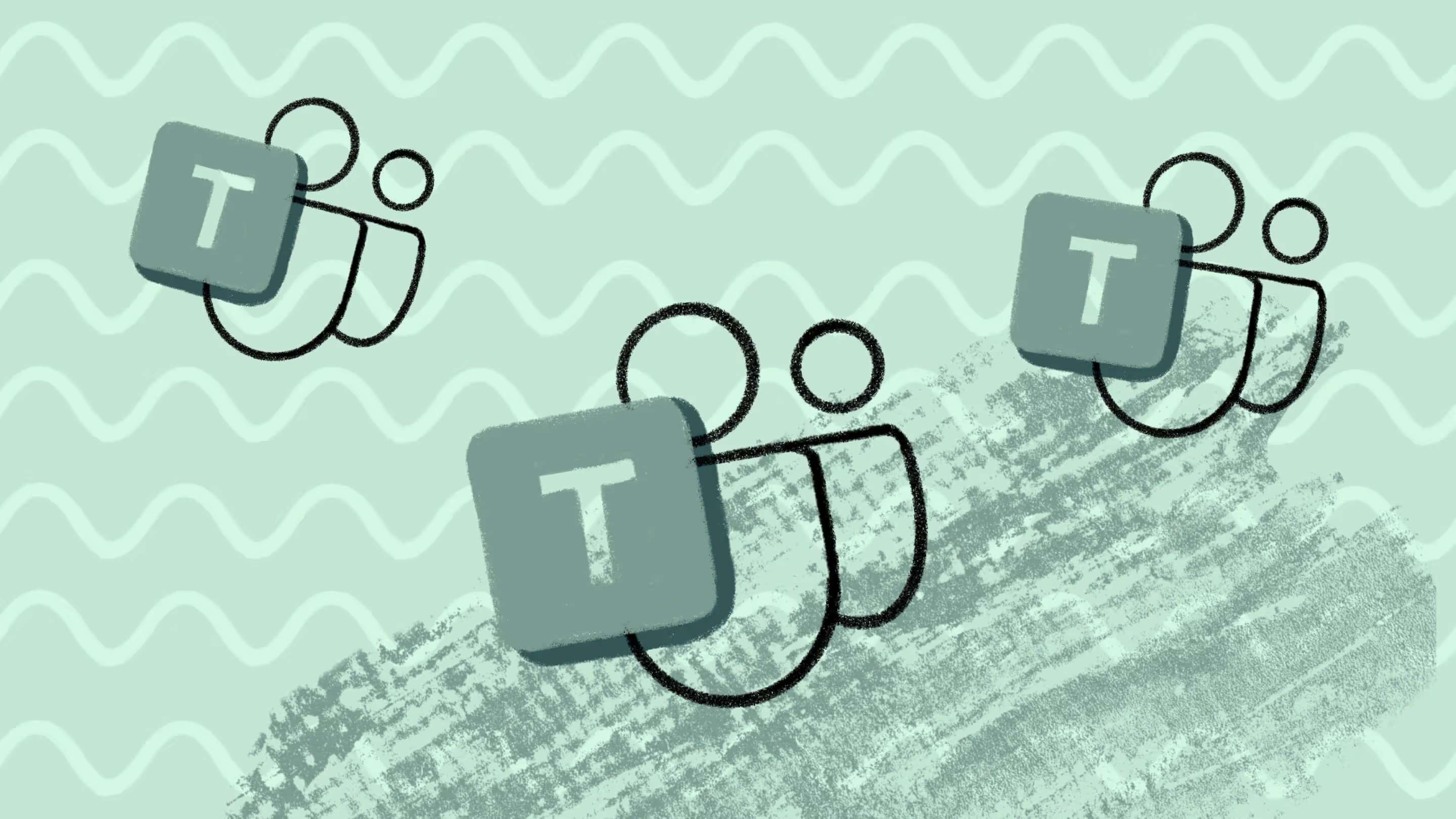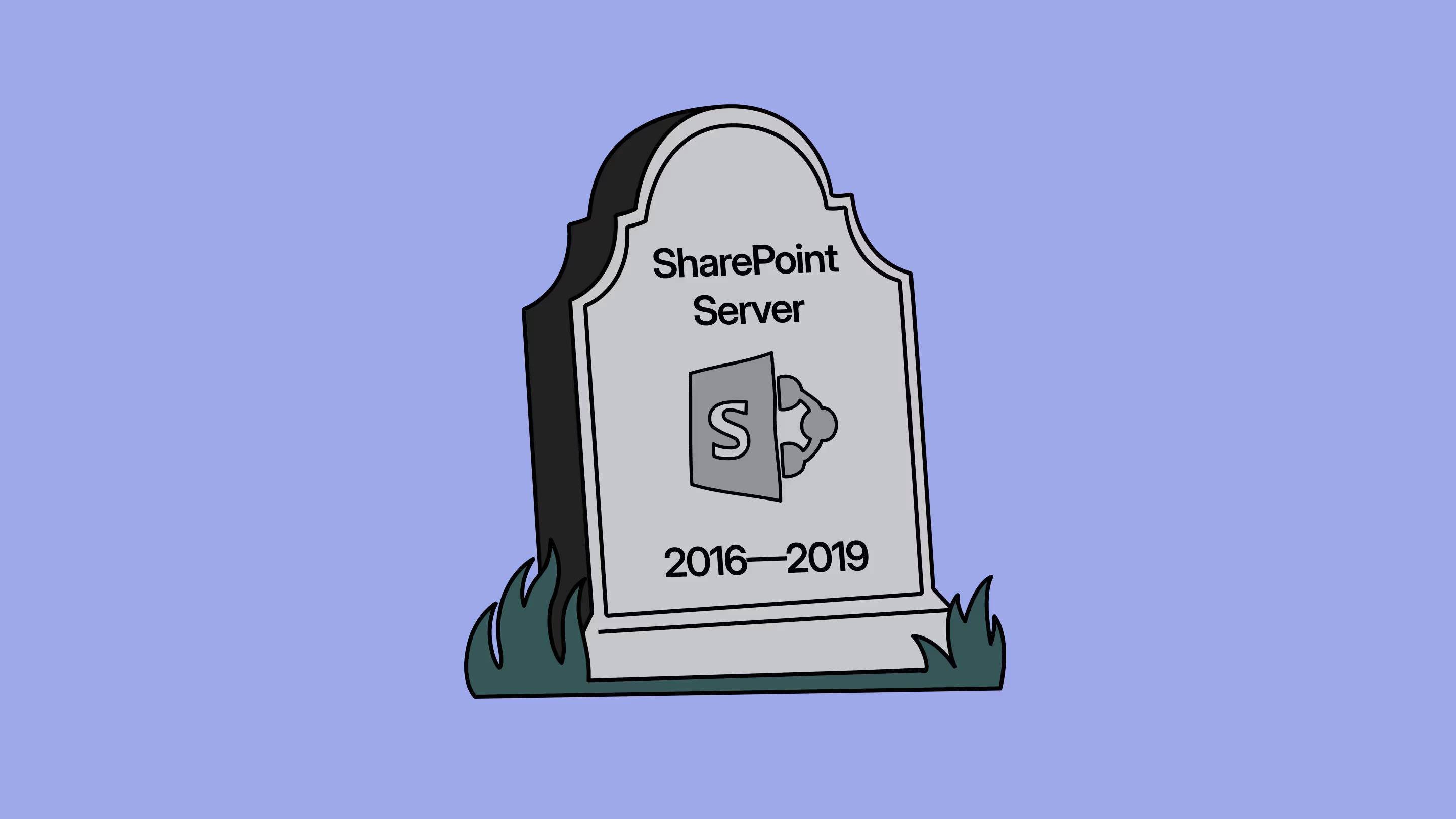10 Microsoft Teams end-user training tips for IT pros
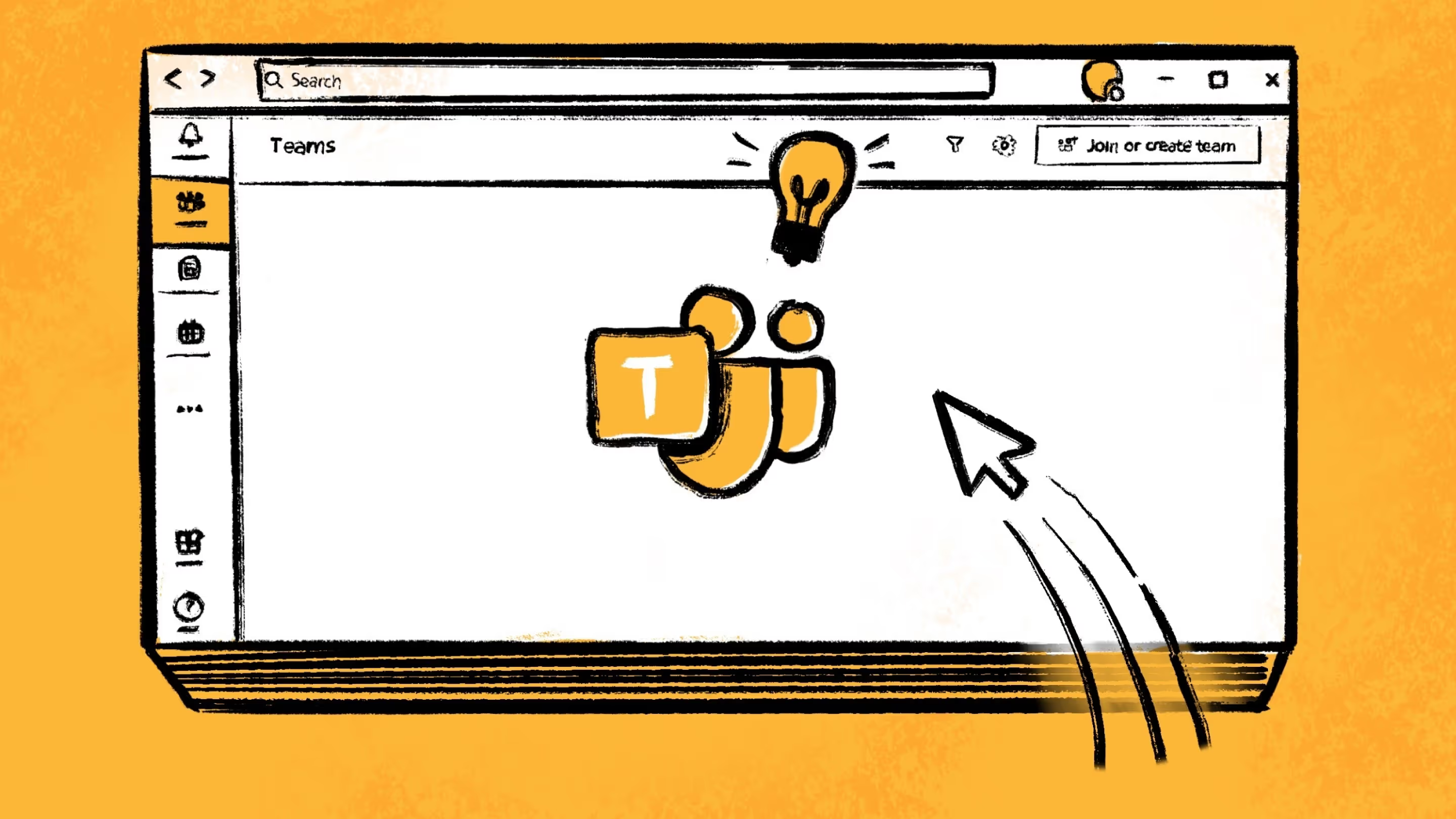
Table of contents
Looking to level up your Microsoft Teams end-user training strategies? In our Pass the Mic webinar, Microsoft MVP and training specialist Andy Huneycutt shares how he rolls out and scales training for Teams, and end-user training tips.
Ideally, you want everyone to use Microsoft Teams effectively without having to invest a lot of time and budget into training. But like most technologies, harnessing the true potential of Teams beyond just meetings and chat doesn’t happen at the flip of a switch.
Training users to use Teams effectively is one of the biggest challenges facing IT professionals. Without best practices and formal guidance in place, things in Teams can quickly spiral out of control (think sprawl, shadow IT, and low user adoption).
In a survey of the Microsoft 365 professional community, we asked how much Teams training was offered to users (i.e. employees) during rollout. Only 19% said that they provided users with official training that included extensive training material and activities.

To help IT pros overcome obstacles to Teams end-user training, we asked our friend, Microsoft MVP and training specialist Andy Huneycutt, to demonstrate how he built a Teams training platform and share his end-user training tips in our on-demand webinar.
Keep reading to review the main takeaways below.
Tip #1: Identify your audience
How can you upskill users? What does a more experienced Teams user, a manager, or a meeting lead need to know? By identifying and assessing user needs and roles, you’ll be able to determine what topics to cover in your training and provide the right amount of support.
For end users who need support in understanding what Microsoft Teams is and its purpose, valuable guides can be an excellent resource for training.
Tips on developing training topics for Teams:
- Provide end users with an introduction to Teams and walk them through how to work in teams and channels, what it means to share a file, channels vs. private chat, Teams meetings best practices, etc.
- Training power users goes a little further with topics like how to add and remove users, maintain membership, organize and deliver meetings, manage files, create teams, and so on.
Tip #2: Build a foundation with the familiar
While Teams comes with the familiar troupe of features (chat, meeting, calling) that are core to your user’s workflow, these tools can be compared to daily forms of communication. We text, email, and call every day, but the value of Teams is in the way it brings all these things (and more) together in one centralized location.
Getting users to view Teams as the hub for teamwork in all forms enables them to apply these concepts to their Teams conversations and workflows in a way that can drive higher adoption.
Comparing Microsoft Teams features to daily forms of communication:
- Chat is similar to text messaging
- Channel conversations are comparable to email
- Teams meetings can be compared to Facetime, Zoom, or Skype for Business
Tip #3: Create an org-wide Q&A and FAQ forum using Yammer
It takes a community! Public teams are great for group chat, but Yammer works best with a broad audience when it comes to facilitating company-wide communication.
Create a Microsoft Teams community in Yammer and encourage users to post their Teams questions there so that everyone can benefit from the Q&As. Gather information on the kinds of queries your users tend to have and create a repository of FAQs that you can make available in your Yammer community, enabling users to quickly find information for themselves.
Good to know:
- Yammer conversations are not always available with Microsoft 365 Groups. To get a Microsoft 365 group with Yammer Conversations, you must create it from within Yammer and Yammer only.
- If you decide to create a Yammer-connected group, it’s exclusive. You won’t be able to use the Outlook conversations, Microsoft Teams, or the Calendar.
Related links:
- Group chat in Outlook, Teams, and Yammer
- Yammer and Microsoft 365 Groups – Microsoft documentation
Tip #4: Provide Microsoft Teams how-tos and checklists
Upskill users while keeping it simple and digestible. You can create checklists and how-tos so they can conveniently learn how to get the most out of Teams. This simple approach to end-user training focuses on the fundamentals of Microsoft Teams and includes education around the different features and functionalities in Teams and general best practices on how to use them.
For example, you can provide a checklist for Teams basics like how to organize a meeting which would cover the most essential steps (from scheduling all the way through to meeting options and testing your camera, microphone, and screen share to make sure everything works).
Or, you can provide short how-tos on things like how to show/hide a team or how to pin a channel to the top while also specifying the implications of these actions.
Good to know:
- Teams meeting recordings are stored in two different locations: Private meetings are stored in the OneDrive directory of the person that started the recording. Channel meetings are stored in SharePoint.
- Using Teams in the Teams desktop app is a different experience from using Teams on a mobile device, or in a web browser. Consider covering these points in your training and how they differ in notable ways (e.g., how to join a meeting in the web browser vs. how to join a meeting in the desktop app).
Tip #5: Offer sessions using Microsoft Bookings in Microsoft Teams
The day-to-day issues plaguing end users come in all shapes and sizes. Hold one-on-one office hours or small group sessions to discuss user pain points, understand their needs, and answer their questions around Teams. This way, you can identify areas of opportunity to help shape and improve your training.
Microsoft Bookings is a great tool to use to provide topical training based on your users’ individual needs and support them in their roles or specific scenarios.
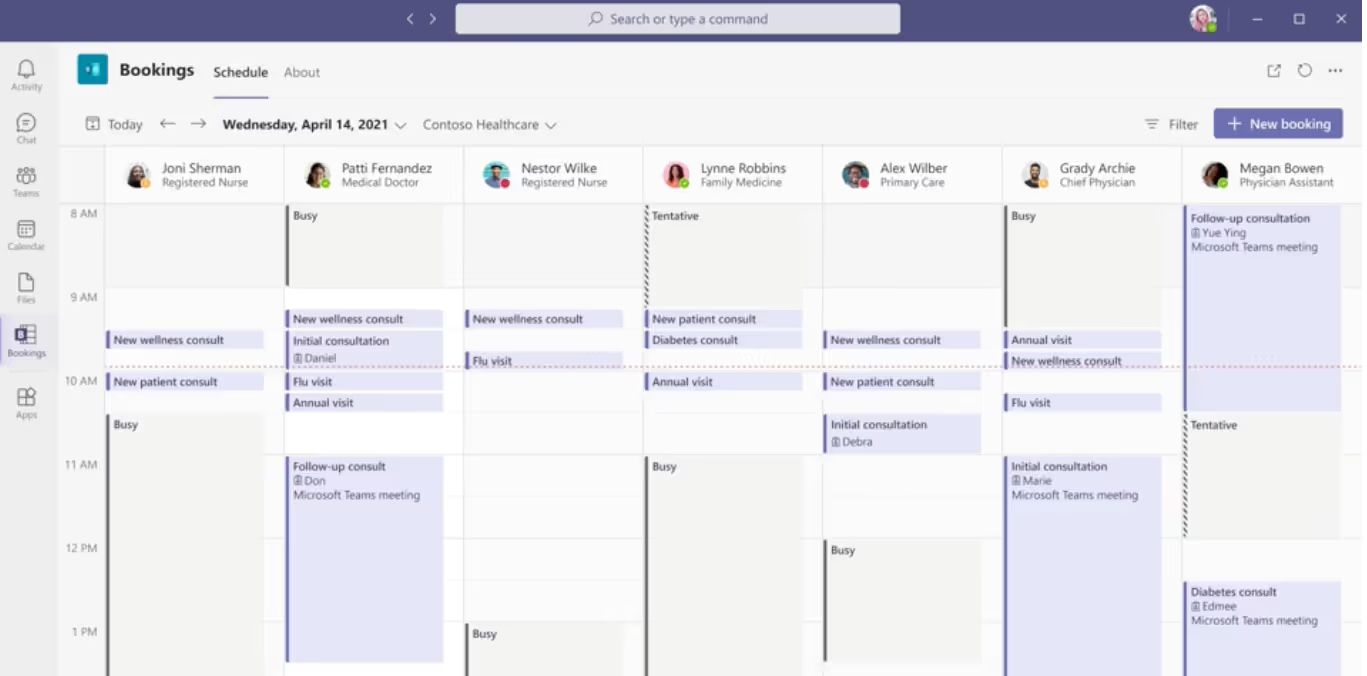
What to know about Microsoft Bookings:
- Bookings is available as an app within Microsoft Teams that allows for easy scheduling of virtual office hours. Users also have the flexibility to book a time that works best for them.
- When setting up a Bookings calendar, you can customize many aspects of the scheduling page, your business information, staff details, service types, and scheduling policies.
- Bookings is integrated with your Microsoft apps like Outlook calendar and Microsoft Teams, and can be found under ‘Manage Apps’ in the Teams admin center.
- To enable the best experience for Bookings, create a Teams meeting policy to automatically admit Everyone in your organization and assign the policy to your staff. Doing this allows users to join the appointment automatically.
Related links:
- Manage the Bookings apps in Microsoft Teams – Microsoft documentation
- Virtual visits with Microsoft Teams and Bookings – Microsoft documentation
Tip #6: Create a learning channel using Microsoft Stream
Running Teams-oriented webinars and workshops for training purposes is one more helpful way to train your colleagues and clients to be better Microsoft 365 users. Share your recorded training sessions on Stream so that anyone who missed it or wants a refresher can go back and watch it at their own convenience.
What’s good about Stream as a video tool is that it automatically generates a searchable transcript of the video when this functionality is enabled, allowing users to look for specific keywords or phrases. And the best part is that it’s integrated with Microsoft Teams!
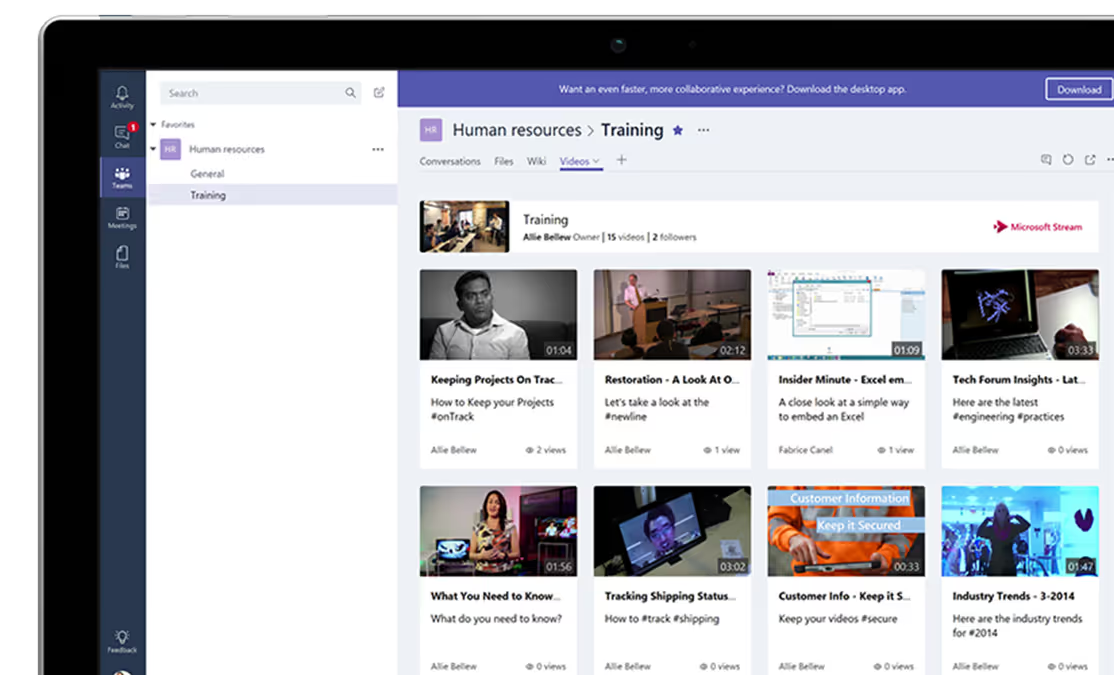
What to know about Microsoft Stream:
- Groups in Stream are built on top of Microsoft 365 Groups. When you make a group in Stream, it creates a new Microsoft 365 group that can be used across Microsoft 365, with an associated email address, calendar, SharePoint site, etc. If you already use Microsoft 365 Groups in your organization through Microsoft Teams, SharePoint, Yammer, Planner, etc, you can start using those groups in Stream right away.
- Channels in Stream are an organization method for videos, but not a permission method. Channels don’t have any permissions on their own.
Related links:
- Groups and channel settings in Stream – Microsoft documentation
- Create a group in Stream – Microsoft documentation
Tip #7: Use the News feature on a SharePoint page
Use SharePoint News to keep your team in the loop about new training. News is shown as a personalized feed on the SharePoint start page and in the mobile app. It can also be shown on team sites, communication sites, and hub sites. Additionally, you can choose to show News in a Teams channel.
Tips for managing SharePoint News:
- Modern SharePoint news pages are out-of-the-box responsive and integrated with the free Microsoft SharePoint app. Publish a news post and update your team on the go!
- SharePoint news is built on modern pages and web parts. When you create a page, you can add and customize web parts, and then publish your page with just a click.
- Your governance plan for SharePoint news pages should focus on mobile devices, updates and news features, page properties, and maintaining the page’s library.
Related links:
- Modern SharePoint for news
- Create and share news on your SharePoint site – Microsoft documentation
- Use the News web part on a SharePoint page – Microsoft documentation
Tip #8: Leverage Microsoft 365 Learning Pathways
Building a knowledge portal on SharePoint and keeping the content up to date doesn’t fit easily into every IT team’s daily workflow. That’s where Microsoft 365 Learning Pathways comes to the rescue. You can bring over your own training content (i.e., recorded training sessions, presentations, and links) to your Microsoft 365 Learning Pathways site.
Good to know:
- Microsoft 365 Learning Pathways is a site collection that’s built on top of a SharePoint communication site. It’s an out-of-the-box training portal for end users that focuses on Microsoft 365 apps (OneDrive, Teams, SharePoint, etc.)
- You must be the Microsoft 365 tenant administrator to be able to install Learning Pathways.
- The Microsoft 365 Learning Pathways site is based on a SharePoint communication template, so it’s easy to modify the site to meet the needs of your organization. You can change the site name, logo, menu items, and the content on the pages.
Tip #9: Adjust training based on trends in your organization
If you made it this far in leveraging the full power of Microsoft 365 to build a scalable end-user training program, congratulations! You’ve made an important investment in the health of your Microsoft 365 ecosystem by taking advantage of the tools available to help you reach and work with your entire organization.
At this point, you may want to use the wealth of information you may have collected in your training efforts to identify patterns, trends, pain points, and adoption barriers to help finesse your training.
Tips for identifying trends in your organization:
- Review your Microsoft Teams community in Yammer, Outlook inbox, and office hours sessions: What kinds of questions are users asking?
- Monitor SharePoint and Stream: What videos are users watching or not watching?
- Identify and take action on orphaned and ownerless teams manually or by using a third-party tool to implement proper governance policies.
Related links:
Tip #10: Anchor Microsoft Teams end-user training to your governance strategy
Drive training initiatives rooted in your organization’s Teams governance policies and provide guardrails to “self-service”, so you can maintain an organized and secure Teams environment at scale.
IT can control security concerns for hybrid workspaces by staying on top of end-user management by securing a remote work infrastructure.
Tips for educating users to keep security top of mind:
- Implement security awareness training best practices for end users across your organization.
- Anti-phishing: Phishing scams are some of the most commonly used attacks by hackers. Train users to be able to identify the telltale signs of a phishing scam and what to do when they receive a suspicious email.
- Password management: Educate users on the best practices for creating strong passwords and password management, like not sharing their passwords with others.
- Data classification: Users should have a thorough understanding of how data is classified and the protections that are in place.
- Microsoft Teams best practices: Microsoft’s End User Training for Microsoft Teams is a great resource to help guide users through the ins and outs of Microsoft Teams and avoid security pitfalls down the line.
Related links:
- Microsoft Teams quick start guide to security
- Microsoft MVPs explain why you should keep “self-service” enabled
- 4 key components of a Teams security governance strategy
Remember: Teams is simply a tool we use to get existing jobs done, so make it easy for users to get started.
Microsoft MVP Andy Huneycutt (@AndyHuneycutt)
Teams end-user training is challenging, particularly for organizations that have rolled out Teams without a clear and scalable training plan in place. The key takeaways from this article are to help guide you through your Teams end-user training goals, so you can focus on the processes and Microsoft 365 tools that can support your organization.
.jpg)


.svg)
.avif)
%20(1).avif)



